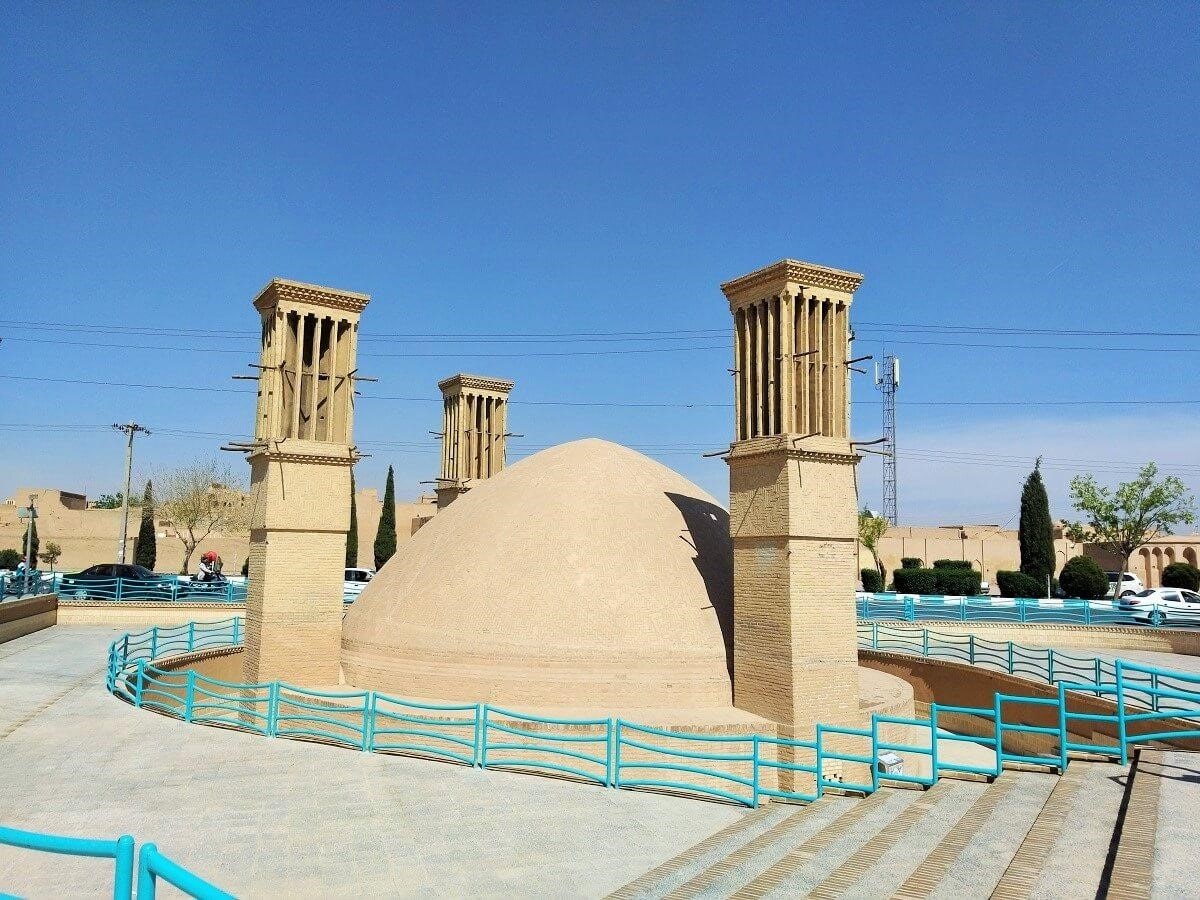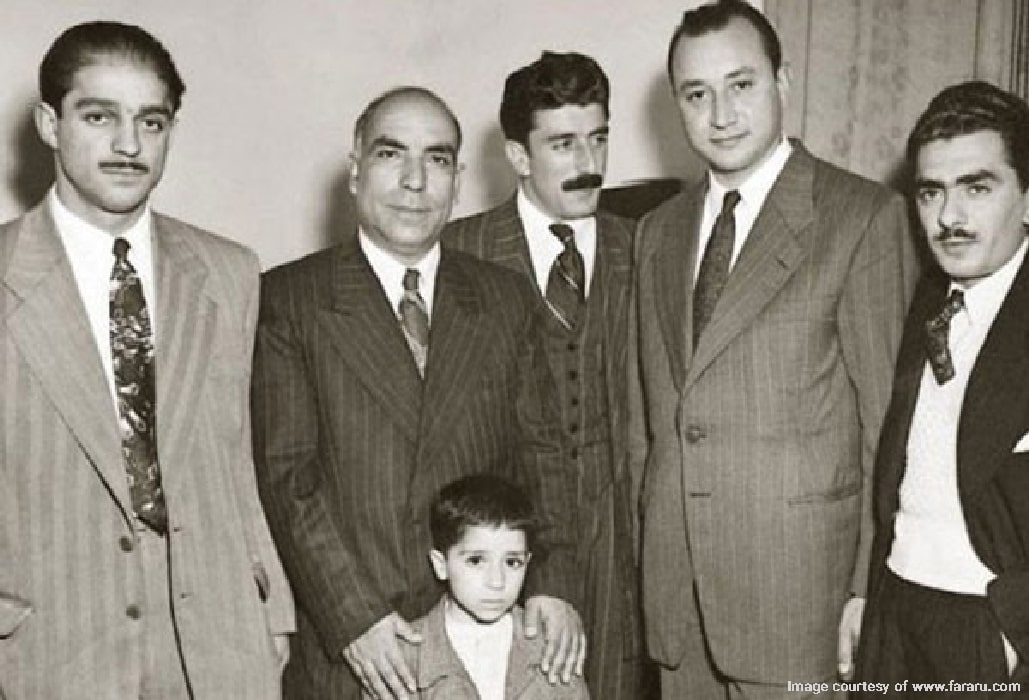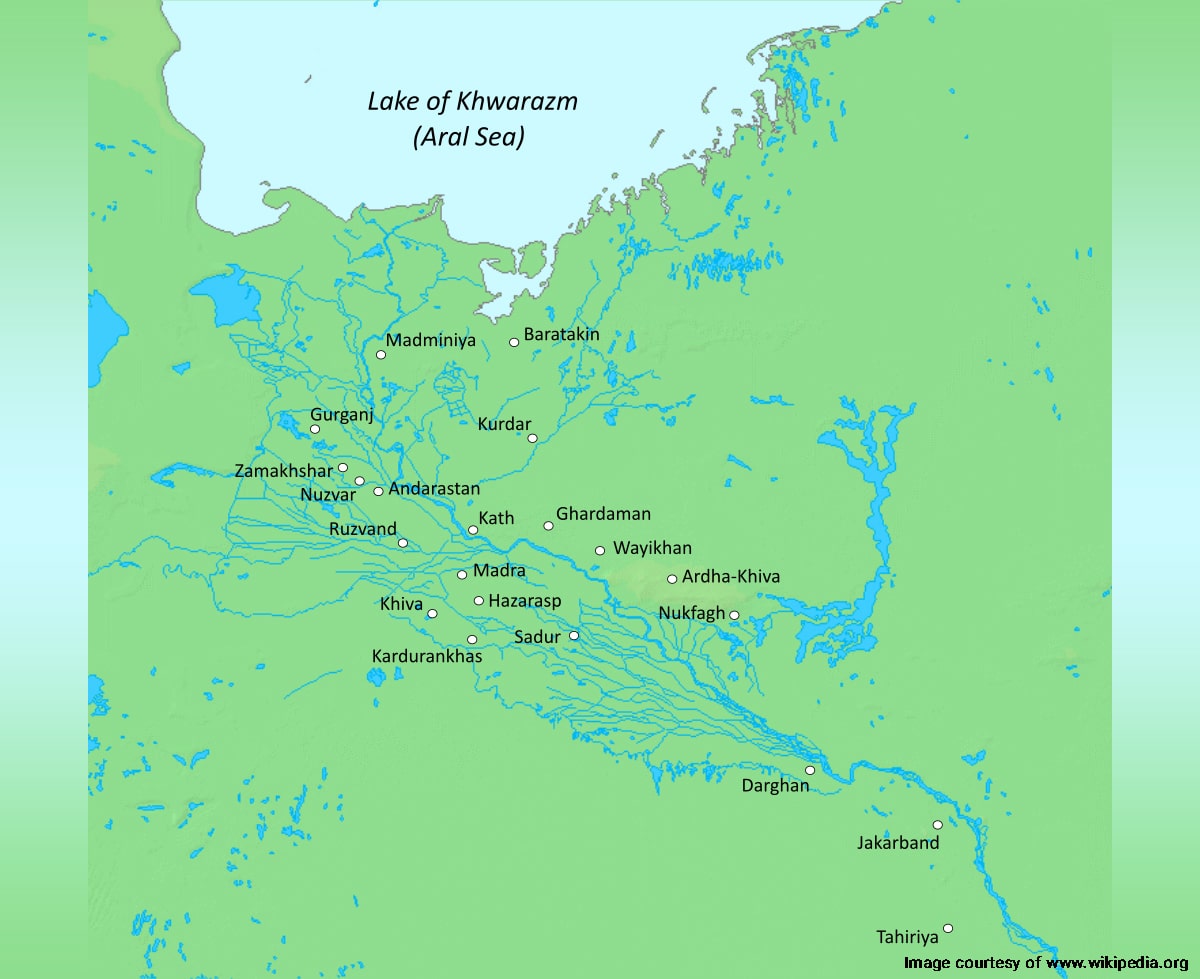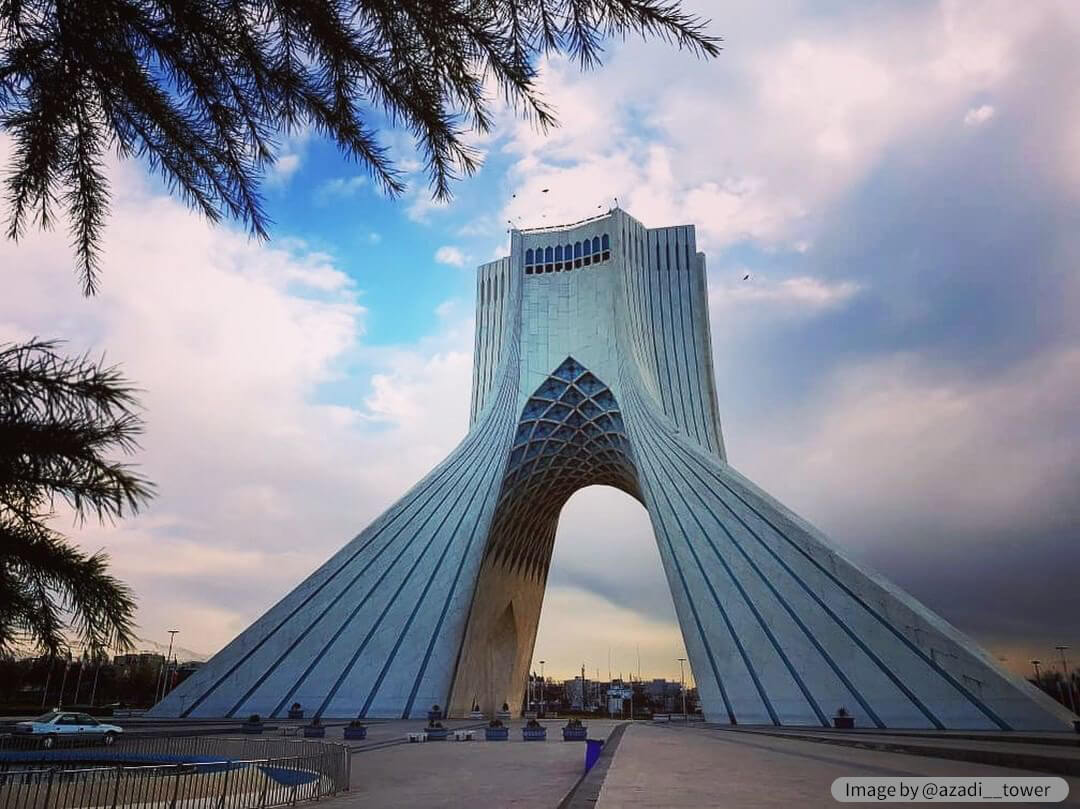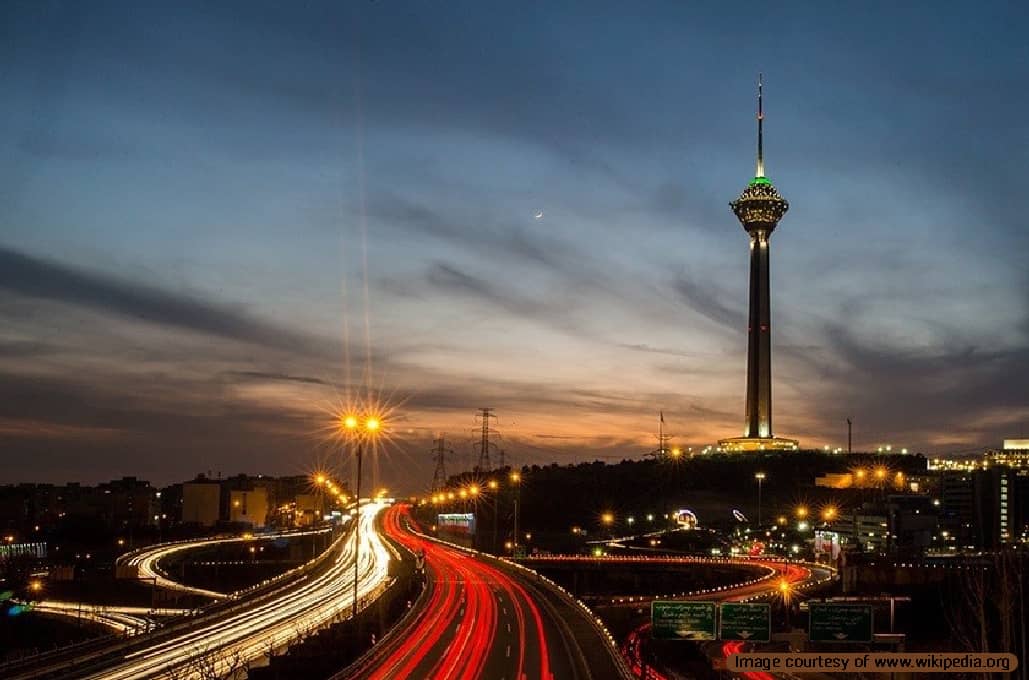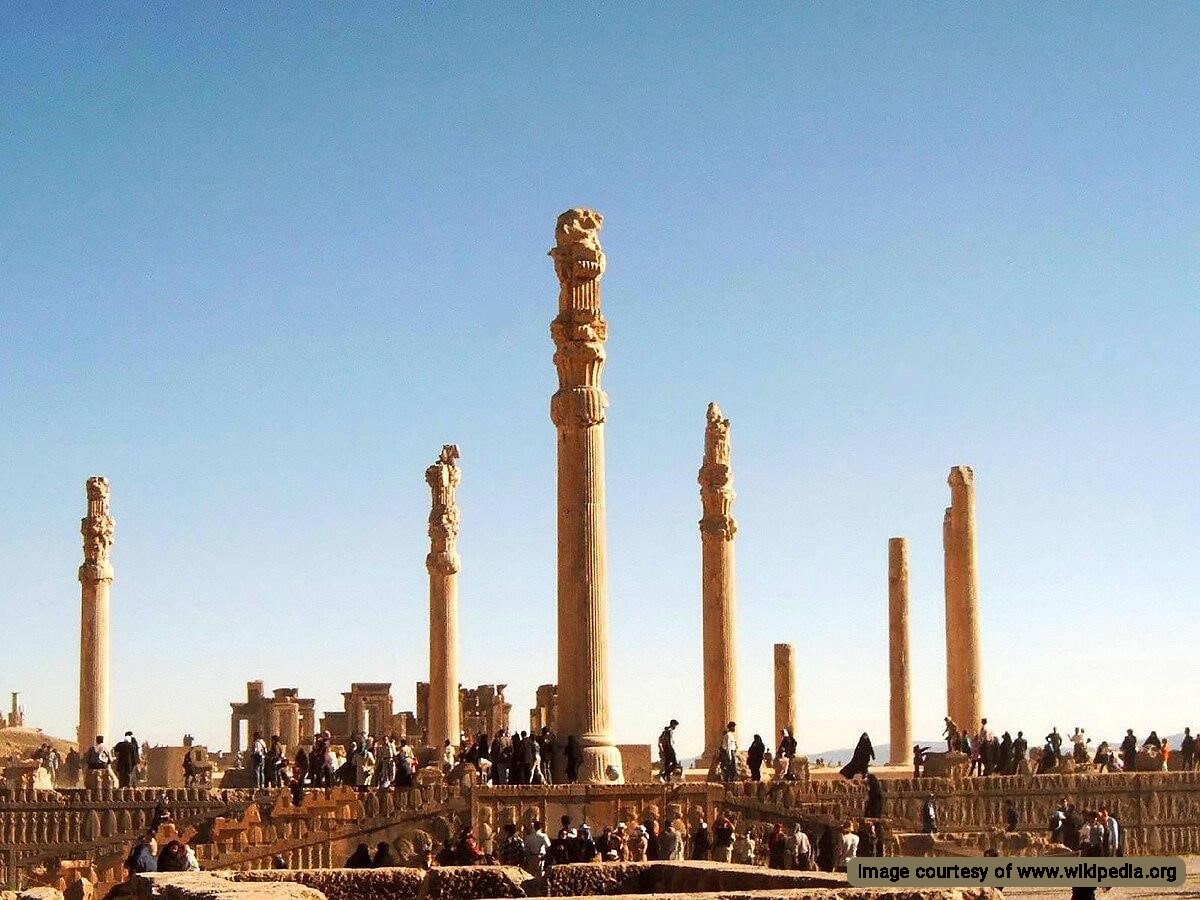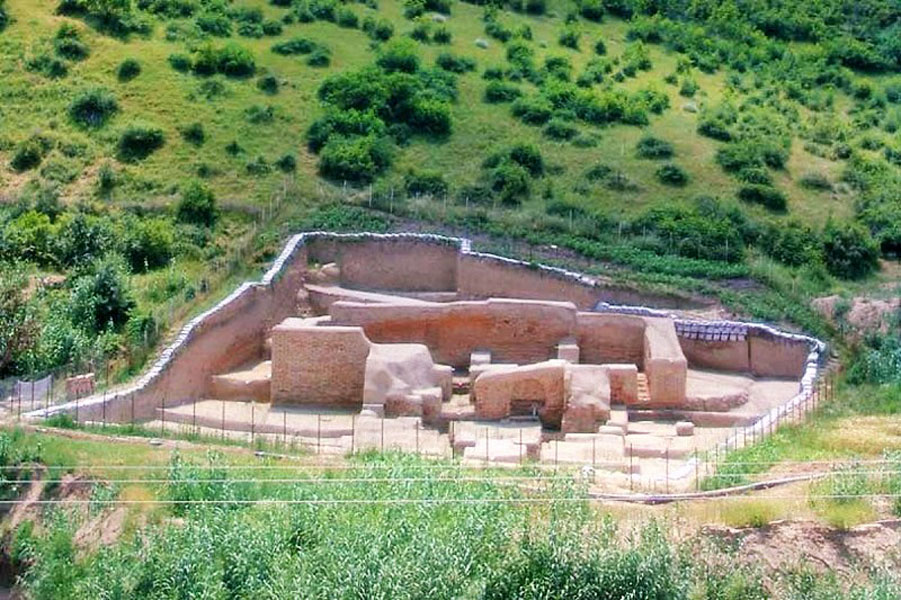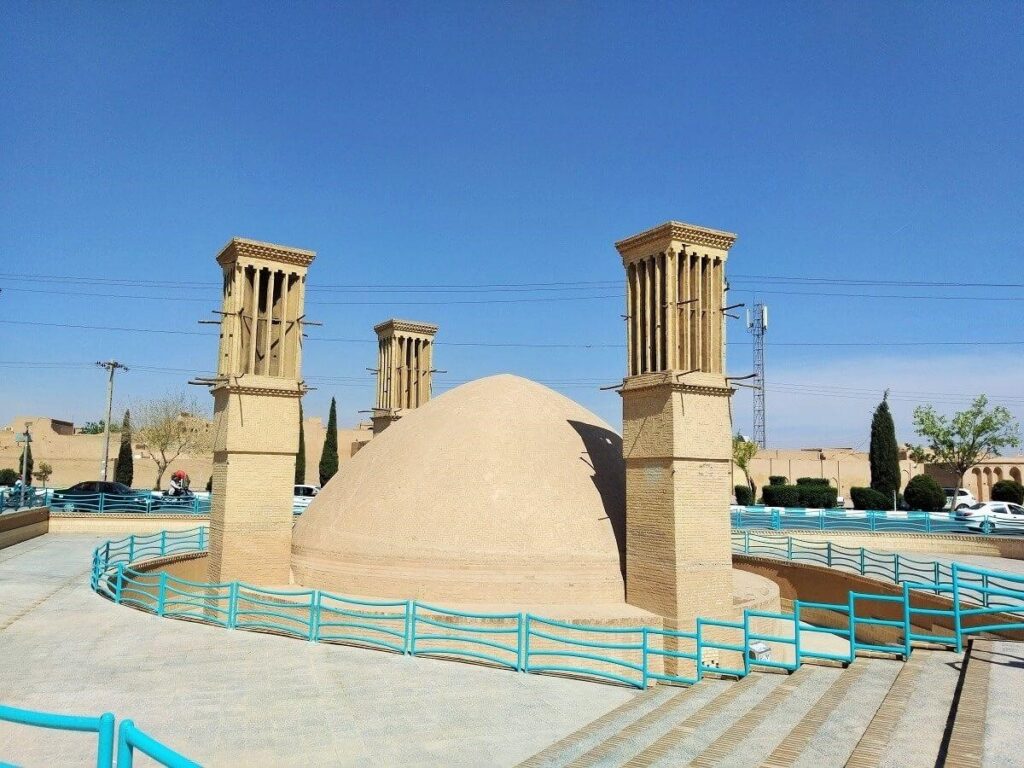
Rostam Giv Cistern is one of the historical monuments among Yazd tourist attractions, located on the side of Basij Blvd. Since Yazd is a desert city, the water supply is crucial to sustain life there. Therefore, the existence of structures employing traditional Persian architecture for water storage seems logical. The city houses around 60 cisterns created for this purpose, and Rostam Giv cistern is one of them.
The cistern is built on a clay layer and flat ground. Based on the available evidence, this reservoir was built in 1941(Early World War II). This building took 2 years to construct, and all the construction costs were endowed by Rostam Giv (the 3rd representative of Iranian Zoroastrians in the Iranian Parliament).
In recognition of its unique features, this cistern was placed on the Iran National Heritage List in 1996. Yazd municipality started a repairs and renovation project in 2018 to preserve this national heritage. The mentioned building is one of the significant monuments of the early 20th century, and we must continue to safeguard it.
Architectural Features of Rostam Giv Cistern
The materials used in this cistern are shale bricks and Sarooj mortar (a mixture of clay and limestone in a ratio of 6:4). Shale brick is a type of brick that is created from a fine-grained sedimentary stone (shale stone) or mineral stone, under pressure and special conditions. The use of this brick in the Rostam Giv water reservoir offers a special beauty.
This cistern has different parts that we will describe:
- Dome: This building has a hemispherical dome that seems to rise from the ground.
- Windcatchers: There are four windcatchers on the sides of the dome of this reservoir. These windcatchers play the role of air conditioning and cooling the water inside the reservoir. These windcatchers are tall and have a square base.
- Khazineh (Reservoir): The cistern has a large cylinder-shaped reservoir with a storage capacity of 2,300 cubic meters (equivalent to two million and 300,000 liters) of water. This reservoir has an opening with a diameter of 14 meters and a depth of about 15 meters.
- Archway and entrance door: The archway and entrance of this reservoir feature engraving and frameworks.
The cistern has two entrances accessed by two neighborhoods in the past. Muslims lived in one of these neighborhoods and Zoroastrians lived in the other, and the distance between the two neighborhoods was about 2 kilometers. This indicates both religious groups shared the same water source but used two separate entrances.
Cistern Function and Application in the Past
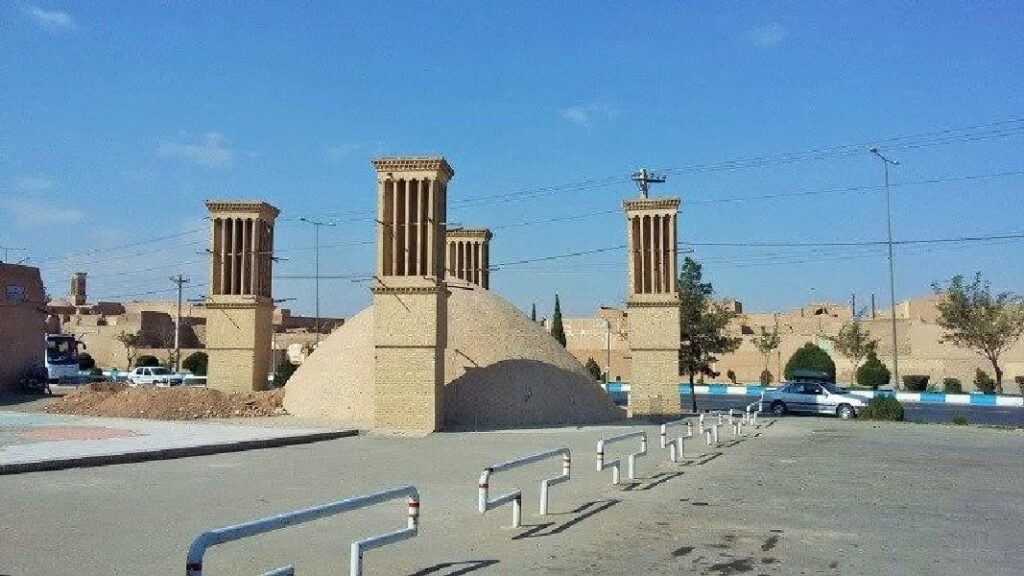
Cisterns are covered reservoirs that are below the ground level. These reservoirs store water from rivers and aqueducts to supply water in times of shortage.
Considering the existence of different climates in Iran, water shortage is common in some areas such as the desert regions. The ancient strategy to solve this problem was to use a cistern. These buildings are also known by other names such as Howz, Berkeh (pond), Morghi, Morghak, Manba’ (supply), and Anbar (storage).
These cisterns were usually built in populated areas such as residential neighborhoods and caravanserais. Therefore, many people could use them to meet their needs. Sometimes, some wealthy people built cisterns in their homes. For this reason, we see different types of private and public cisterns in Yazd.
The number of windcatchers built around cisterns is determined by their area and size. The smaller ones have two windcatchers and the larger reservoirs have four to six windcatchers.
Today, due to the drying up of the rivers and aqueducts in Yazd city, the Rostam Giv Cistern does not have enough water. Therefore, the water needed by the houses is supplied through the municipal water supply system.
Visit Rostam Giv Cistern in Yazd Zartosht Neighborhood
Although the existing water reservoirs in Yazd have lost their main function to some extent, the restoration and maintenance of these buildings add to the traditional beauty of this city. Rostam Giv Cistern is one of the decorated water reservoirs of this city, which features unique architecture. Every year, many travelers who visit Yazd come to this unique cistern on their tour.
If you are traveling to Yazd on an Iran tour package or personally, do not miss visiting this cistern. Destination Iran invites you to witness the unique architecture of Rostam Giv Cistern and check out other Yazd tourist attractions.
Where is the location of the Rostam Giv Cistern?
Rostam Giv Cistern is located in the Zartosht neighborhood of Yazd city. This reservoir is located on the side of Basij Blvrd, at the corner of Mehr Alley.
On your trip to Yazd, you can visit this historical place by using the location below:
Frequently Asked Questions About Rostam Giv Cistern
If you did not find the answer to your questions in the following, share your questions with us through the comments section of this post. We will answer them as soon as possible.
What is the reason for the naming of the Rostam Giv cistern?
Lord Rostam Giv, one of the elders and nobles of Yazd, the 3rd representative of Iranian Zoroastrians in the Iranian parliament, and a member of the Iranian Senate provided the expenses of building this building. Therefore, the reservoir was known by the same name.
Why was the Rostam Giv cistern built in Yazd city?
Yazd is one of the desert cities of Iran that has always faced water shortages. For this reason, they overcome this problem by building cisterns, which are covered water reservoirs. Giv cistern has played a vital role in supplying the water needed by the people of Yazd.
What is the history of Yazd’s Rostam Giv cistern?
The history of the Giv water reservoir dates back to 1941, a couple of years after the Second World War had started. According to the available quotes, the construction of this historical monument took about 2 years. The architecture of Giv Cistern, which is also known as Rostam Giv, was done by Haj Mohammad Ebrahim Khorramshahi, and Lord Jamshid Amanat also had the task of inspecting and supervising the construction.
Why are windcatchers installed in water reservoirs such as the Rostam Giv cistern?
The windcatchers were built above the reservoirs and the reason for their construction was the hot weather of Yazd province. They prevented water in the reservoir from getting too hot or evaporating. Most of the reservoirs in Yazd have two windcatchers, However, based on their area and size, some of these reservoirs, such as Rostam Giv cistern, are built with four windcatchers and some with five or even six windcatchers.
What is the current status of Rostam Giv cistern in Yazd city?
Due to the drying up of the aqueducts of Yazd city, the water reservoirs, including the Giv cistern, are mostly empty, and the needs of the people of Yazd are also met by the city’s water supply.






